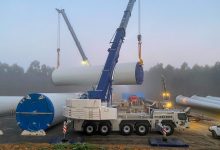Looking at the required task to get to 80% renewables by 2030 would require no acceleration from the historic rate – if you ignore the fact that it takes two years for a solar farm and three years for wind farm to be built.
Once I assume a three-year lag then that leaves four years to get 20GW of wind and solar committed and, say, six years for the required transmission to be built. That’s basically a doubling of the historic pace.
And even so it’s leaving a lot of the job to rooftop solar. The fact that the job can be left to rooftop solar where in the end the consumers pay most of the cost shows how well the SRES policy has worked. Moving that on to household batteries could work just as well, but that’s a distraction from the point of this short note.

80% renewable by 2030 is a great target, but not easy to achieve
Annualised electricity demand in the NEM is about 209TWh right now and by 2030 will likely be between 220 and 230TWh. Lets call it 225TWh. And 80% of that is about 180TWh.
Right now, annualised production of renewables is about 76TWh, for something like a 36% share.

Although 36% would have shocked most in the industry five years ago and been laughed out of the country 10 years ago, it’s still a long way from 76TWh to 180TWh in just seven years. So we basically need another 100TWh to hit that target.
For me, it’s somewhat reminiscent of an old-style 50 over cricket game. In that game, when building a total, the strategy was not to lose too many wickets early, build a strong foundation, and then go for it at the back end. Hopefully that is what is going on here, but we are at the nervous stage.
If we only look at historic and current growth rates we won’t get there. Hydro output won’t change and VRE (variable renewables, or wind and solar) is growing at 8TWh per year, a rate basically unchanged over the past five years. Another seven years of 8TWh is just 56TWh less than half of the “notional” target.

And in fact, at the current rate and assuming the 8TWh per year replaces coal, it will be about four years before total renewable production is greater than coal. Glass-half-full people might say “incredible, just another four years.” But I don’t see it like that.

What’s under construction
Although there are a number of wind farms that I have expected to start construction before now, the fact is that in NSW progress has slowed down.
Part of this is that CWP was a big player in NSW and the Squadron takeover has led to a pause (at least in my opinion). For instance, the Uungula wind farm I had previously assumed to be going full steam ahead seems to have changed.
Most of the current new wind build is in fact in Queensland.
So that’s 5GW that will get built, and at 40% capacity factor that’s 18TWh, or let’s say an optimistic 5TWh per year. Except it won’t be that much in the next couple of years.

Of those, Rye Park, Ryan Corner, Hawkesdale and Goyder South wind farms are the only ones likely to be operating in the next two years. 275MW of Goyder, being stage 1a, is under construction. We will be lucky if a total of 1GW is up and running in the next 18 months.
I may have missed some wind farms in that list that have been publicly announced as committed.
The solar farms add to about 1.3GW, much of which is in Victoria, and where some PPA prices were set prior to construction cost increases.

That is 1.3GW of solar, and at 26% capacity factor is about 3TWh, which is frankly not much more than a rounding error.
Rooftop solar can reasonably be expected to add about 16GW and maybe as much as 20GW in the 2023-2030 calendar years, but let’s call it 18GW. At a 14% capacity factor that’s 22TWh.








